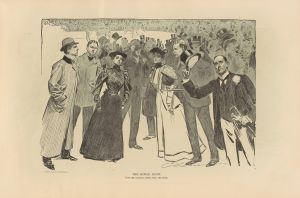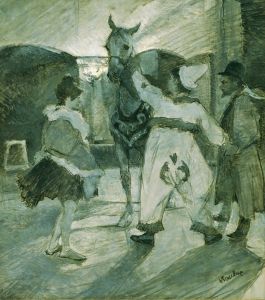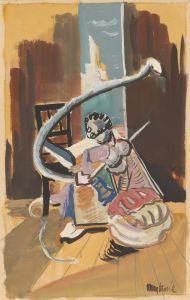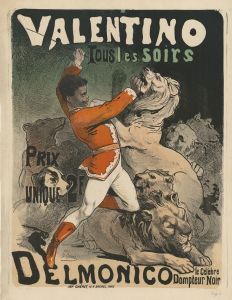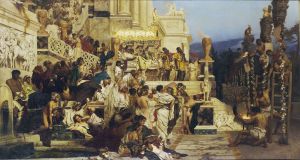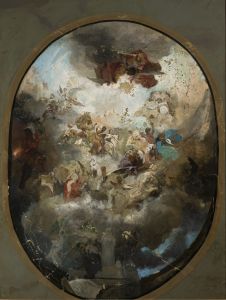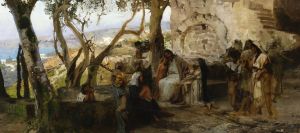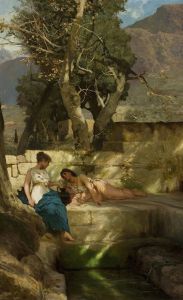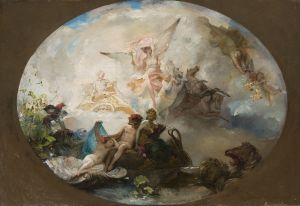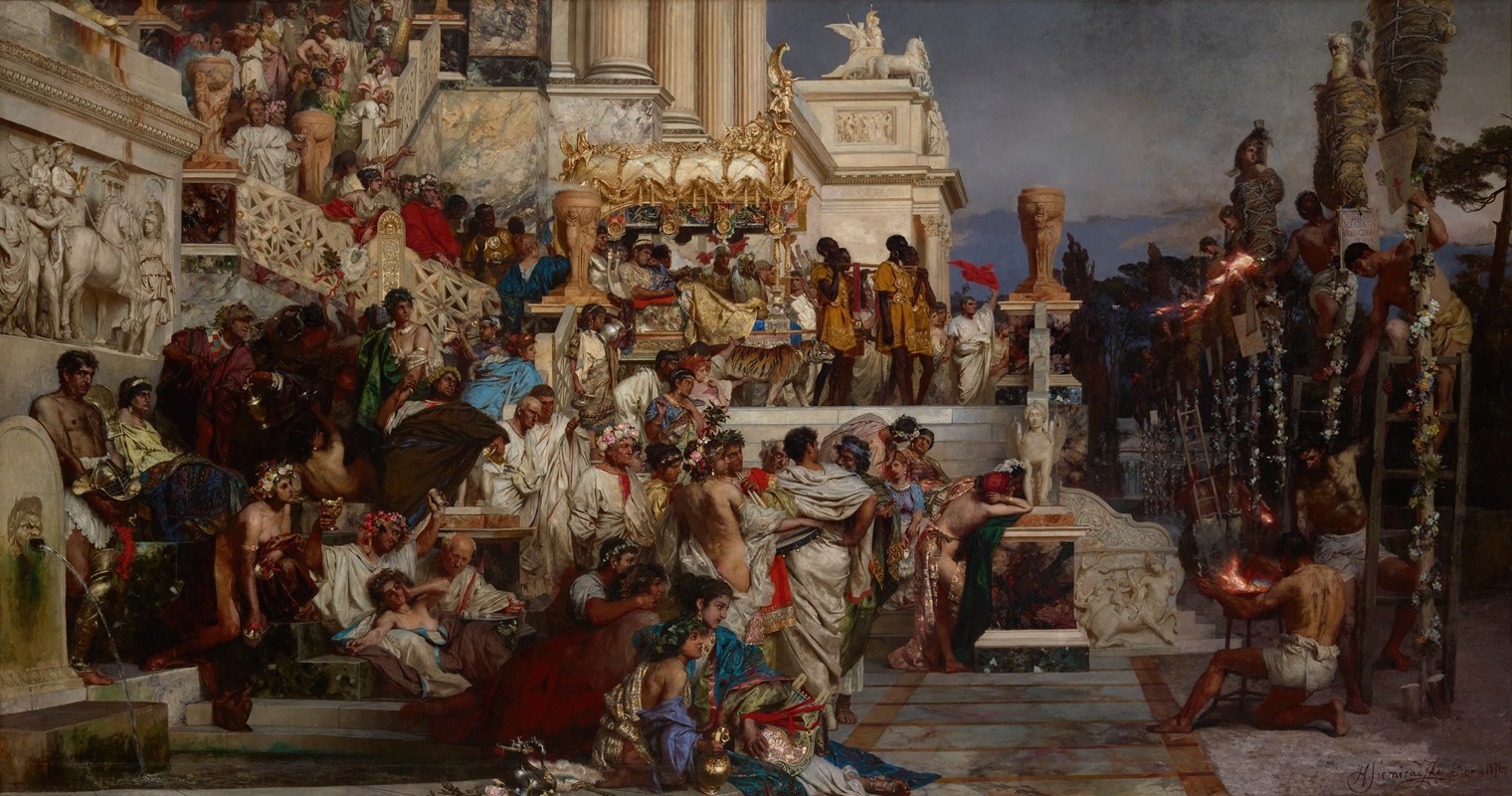
Nero’s Torches
A hand-painted replica of Henryk Siemiradzki’s masterpiece Nero’s Torches, meticulously crafted by professional artists to capture the true essence of the original. Each piece is created with museum-quality canvas and rare mineral pigments, carefully painted by experienced artists with delicate brushstrokes and rich, layered colors to perfectly recreate the texture of the original artwork. Unlike machine-printed reproductions, this hand-painted version brings the painting to life, infused with the artist’s emotions and skill in every stroke. Whether for personal collection or home decoration, it instantly elevates the artistic atmosphere of any space.
“Nero’s Torches” is a monumental oil painting created in 1876 by the Polish artist Henryk Siemiradzki. The work is also known by its alternative title, “Candlesticks of Christianity” (“Fackeln des Christentums” in German). It is widely regarded as one of Siemiradzki’s most significant and ambitious works, showcasing his mastery of historical and biblical themes, as well as his meticulous attention to detail and dramatic use of light.
The painting depicts a harrowing scene from ancient Rome during the reign of Emperor Nero (54–68 CE). It portrays the persecution of early Christians, specifically an event in which Christians were used as human torches to illuminate Nero’s gardens at night. This brutal act is documented in historical accounts, including the writings of Tacitus, a Roman historian. Tacitus described how Nero blamed Christians for the Great Fire of Rome in 64 CE and subjected them to horrific punishments, including being burned alive.
In the composition, Siemiradzki presents a vivid and emotionally charged tableau. The central focus is on the bound Christian martyrs, who are tied to stakes and prepared to be set alight. Surrounding them are spectators, including Roman citizens and members of the imperial court, who observe the scene with a mix of curiosity, indifference, and even amusement. Nero himself is depicted reclining on a luxurious couch, accompanied by his entourage, emphasizing his detachment and decadence. The artist contrasts the suffering of the martyrs with the opulence and moral decay of the Roman elite.
Siemiradzki’s use of light and shadow is particularly striking in this work. The flickering flames and the glow of torches create a dramatic chiaroscuro effect, heightening the emotional intensity of the scene. The artist’s attention to historical accuracy is evident in the detailed depiction of Roman architecture, clothing, and furnishings, which reflect his extensive research and knowledge of antiquity.
The painting was first exhibited in Rome in 1876 and quickly gained international acclaim. It was later presented to the Russian Imperial Academy of Arts in St. Petersburg, where it became part of the collection of the Russian Museum. Today, Nero’s Torches remains an important example of 19th-century academic art and a poignant reminder of the persecution faced by early Christians.
Henryk Siemiradzki’s work is often associated with the broader European tradition of historical painting, which sought to depict significant events from the past with both artistic and educational intent. Nero’s Torches exemplifies this approach, combining technical brilliance with a powerful moral and historical message.






